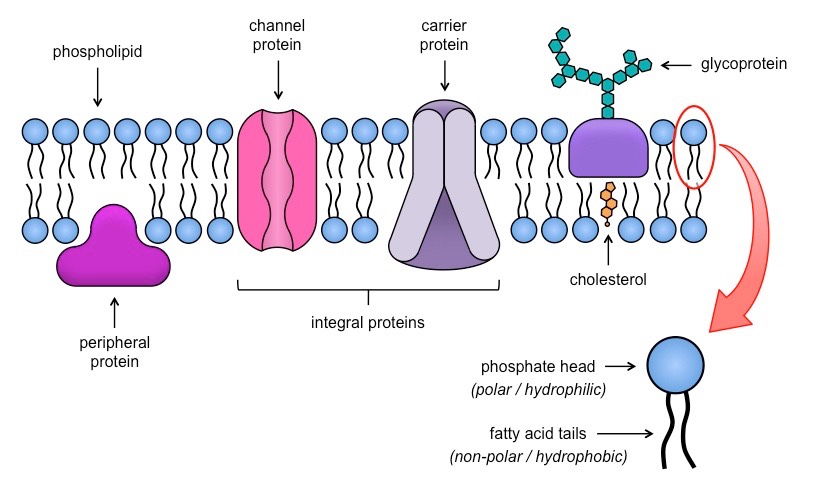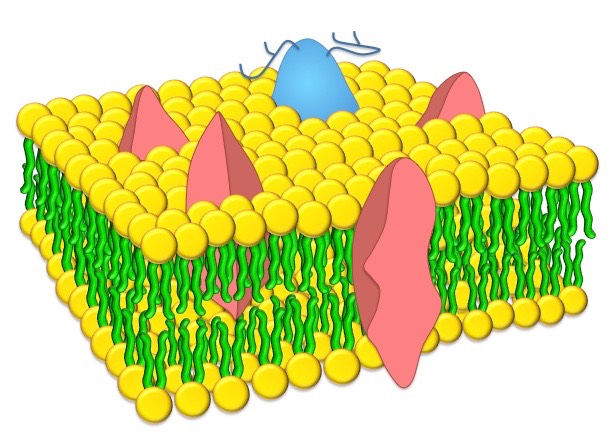![]()
Skill:
• Drawing of the fluid-mosaic model
Cell membranes are represented according to a fluid-mosaic model, due to the fact that they are:
- Fluid – the phospholipid bilayer is viscous and individual phospholipids can move position
- Mosaic – the phospholipid bilayer is embedded with proteins, resulting in a mosaic of components
Structure of the Plasma Membrane (Fluid-Mosaic)

Components of the Plasma Membrane
Phospholipids – Form a bilayer with phosphate heads facing outwards and fatty acid tails facing inwards
Cholesterol – Found in animal cell membranes and functions to improve stability and reduce fluidity
Proteins – May be either integral (transmembrane) or peripheral and serve a variety of roles
Fluid-Mosaic Model (3D)

